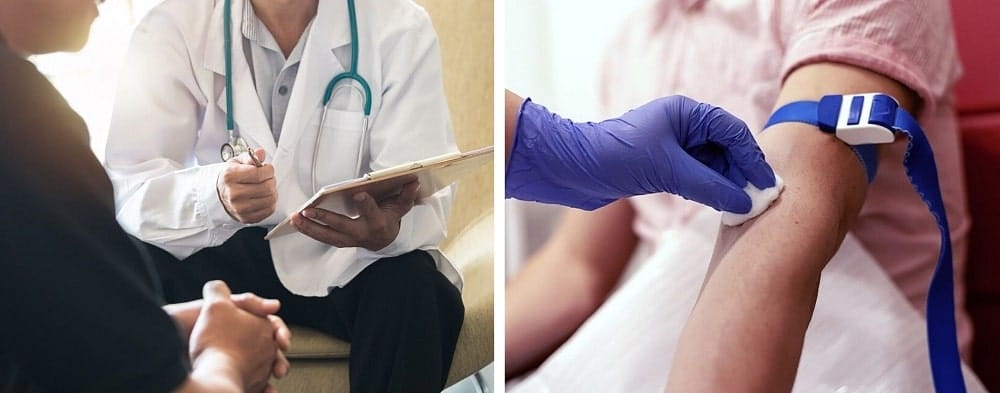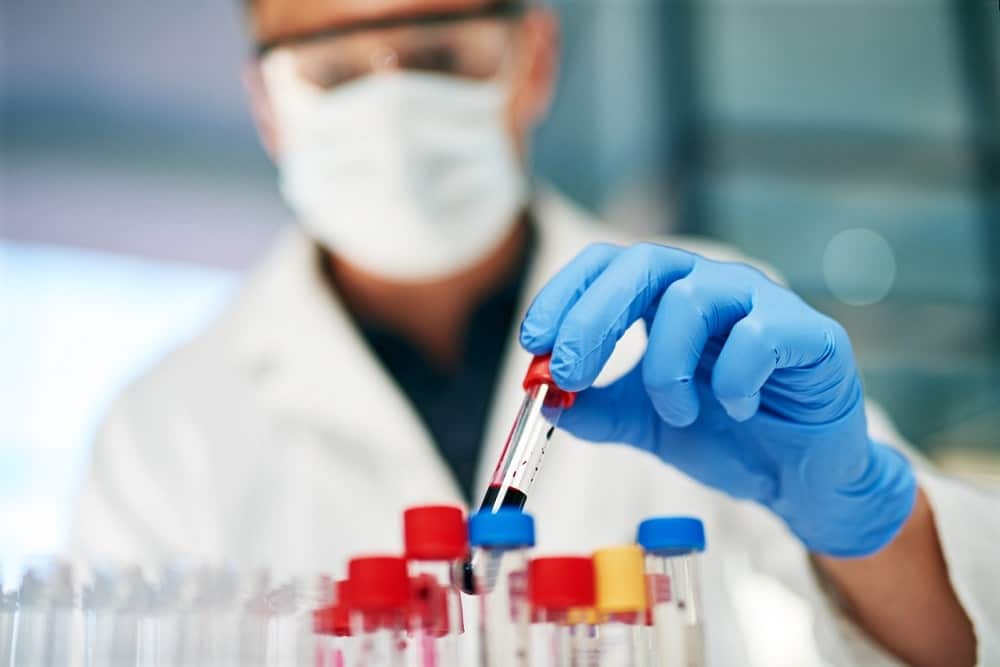Table of Contents
Men are not the only ones who can benefit from a low testosterone levels test. Many women, especially those of menopause age, may find themselves suffering from symptoms of Low T. Testosterone deficiency may not sound scary, but it is essential to understand that it can contribute to many other health risks. That is why we provide this report on low testosterone testing, including a discussion about why you should get the test, the procedure and preparation, and the meaning of the blood test results.
What is a low testosterone test, and who needs it?
A low testosterone test measures the amount of testosterone in the bloodstream. There are actually three different types of serum testosterone levels:
- Total testosterone – the sum of all testosterone in the body, both bound and unbound
- Free testosterone – the amount of testosterone not bound to any protein and available for binding with androgen receptors (AR)
- Bioavailable testosterone – the total to testosterone that is free as well as that which is loosely bound to the protein albumin
Because testosterone is fat-soluble, it cannot move through the bloodstream on its own. Instead, it must bind to one of two proteins – albumin and sex hormone-binding globulin (SHBG). Testosterone must separate from SHBG before it is available to use by the AR. Albumin-bound testosterone is open to the AR because the binding is weak.
Most hormone specialists order the total and free low testosterone levels test panels when diagnosing testosterone deficiency.
The low testosterone levels test is vital as diagnosing Low T can help reduce the risk of other, more significant health concerns.
Why to Test for Low Testosterone
The primary reason to test for testosterone deficiency is to determine why a person is having symptoms that may include fatigue, low libido, memory loss, depression, weight gain, insomnia, muscle loss, and anemia. Those are only a few of the many signs of Low T.
Running a low testosterone levels test is crucial if any of these symptoms are present because if left untreated, testosterone deficiency can increase the risk of developing any of the following:
- Atherosclerosis
- High cholesterol
- Cardiovascular disease
- Insulin resistance
- Obesity
- High blood pressure
- Type 2 diabetes
- Metabolic syndrome
- Depression
- Dementia
- Osteoporosis
- Infertility
Testosterone is crucial for maintaining healthy circulation, blood cell production, strong bones and muscles, and sharp brain functions. These processes are in addition to supporting a healthy sex life.
How to Test for Low Testosterone
Finding out how to test for low testosterone is critical. Many online testing sites offer the ability to do a saliva test that measures testosterone levels. Doing so is a waste of money because the hormone doctor will still have to run a complete panel of diagnostic blood tests, including testosterone levels. The best option is to contact a hormone clinic such as ours to arrange for a low testosterone levels test at a local laboratory.
What are the steps for getting tested for low testosterone levels?
Before you can receive a diagnosis of Low T, you must first complete the following steps:
- Medical Consultation – this can be done over the phone through our telemedicine service (significant savings of time and money over traditional doctor’s office visits)
- Health History Questionnaire – we place this online for secure and private completion at home
- Blood Testing – a visit to a local laboratory for a quick collection of a blood sample
- Medical Examination – checks that no other underlying health issues are contributing to the symptoms as well as providing essential information used to determine testosterone treatment and dosage
Here are the procedure facts you need to know about getting checked for Low T:
Stages of Procedure
- Arrive at the laboratory and sign in
- Complete a short intake form
- Be taken into a small, private area or room to a chair with an armrest
- The laboratory technician will check both arms to find the best vein
- The chosen vein site is sterilized with an alcohol swab
- A large rubber band is tied around the upper arm to serve as a tourniquet
- An item to squeeze to help pump blood is placed in your hand
- The needle is inserted into the vein, and a variety of vials with different colored stoppers will collect the blood
- The needle is removed, and a cotton ball or pad is placed over the site followed by a bandage
- Testing is complete
Best Time for Testing
The best time for testing is early in the morning while fasting from the night before.
It takes only a few minutes to complete the low testosterone levels test process at a local laboratory.
Test Preparations
Preparation for a low testosterone levels test is straightforward. You will be asked to stop taking medications that could interfere with the test results. These medications may include the following:
- Anticonvulsants
- Barbiturates
- Opioids
- Other hormone therapies, including estrogen
- Steroids
You will also stop eating at midnight of the evening before the test. In the morning, it is best to have only water before the test. Some people may have a cup of black coffee, but the least you consume, the more accurate your test results.
If possible, try to get to bed by 10 pm or aim for a minimum of seven hours of sleep. That helps provide a more realistic assessment of your testosterone levels.
Do not worry about how to pass your blood test. You are not taking a school exam. We want to ensure an accurate reading to provide you with the best possible treatment. Please do not try to consume special foods, beverages, or supplements to alter the test results.
Preparation for low testosterone levels test requires avoiding the consumption of food after midnight of the evening before the test.
Understanding The Results
The current guidelines from the American Urological Association apply to men and put the lower range of total testosterone at 300 ng/dL. They also define successful treatment as reaching therapeutic testosterone levels of 450 to 600 ng/dL. Our research has shown that men who achieve a range of 500 to 600 ng/dL experience the best results.
Low testosterone test scores are not the only defining diagnostic tool. A hormone specialist also takes symptoms and overall health into consideration. A man can have total testosterone levels well under 300 ng/dL and not have any symptoms. If that is the case, he would not require testosterone treatment. Conversely, having testosterone levels of 400 ng/dL accompanied by multiple symptoms, would put a man in a position to receive testosterone therapy.
For women, the normal range of total testosterone is 15 to 70 ng/dL. Again, the hormone doctor will look at symptoms as well as blood test results when determining treatment. Hot flashes, vaginal dryness, and night sweats are additional signs of low testosterone.
Please contact our hormone clinic for a free phone consultation to discuss getting a low testosterone levels test or for any other questions you have about hormone deficiency and treatment options.




No Comments
Sorry, the comment form is closed at this time.